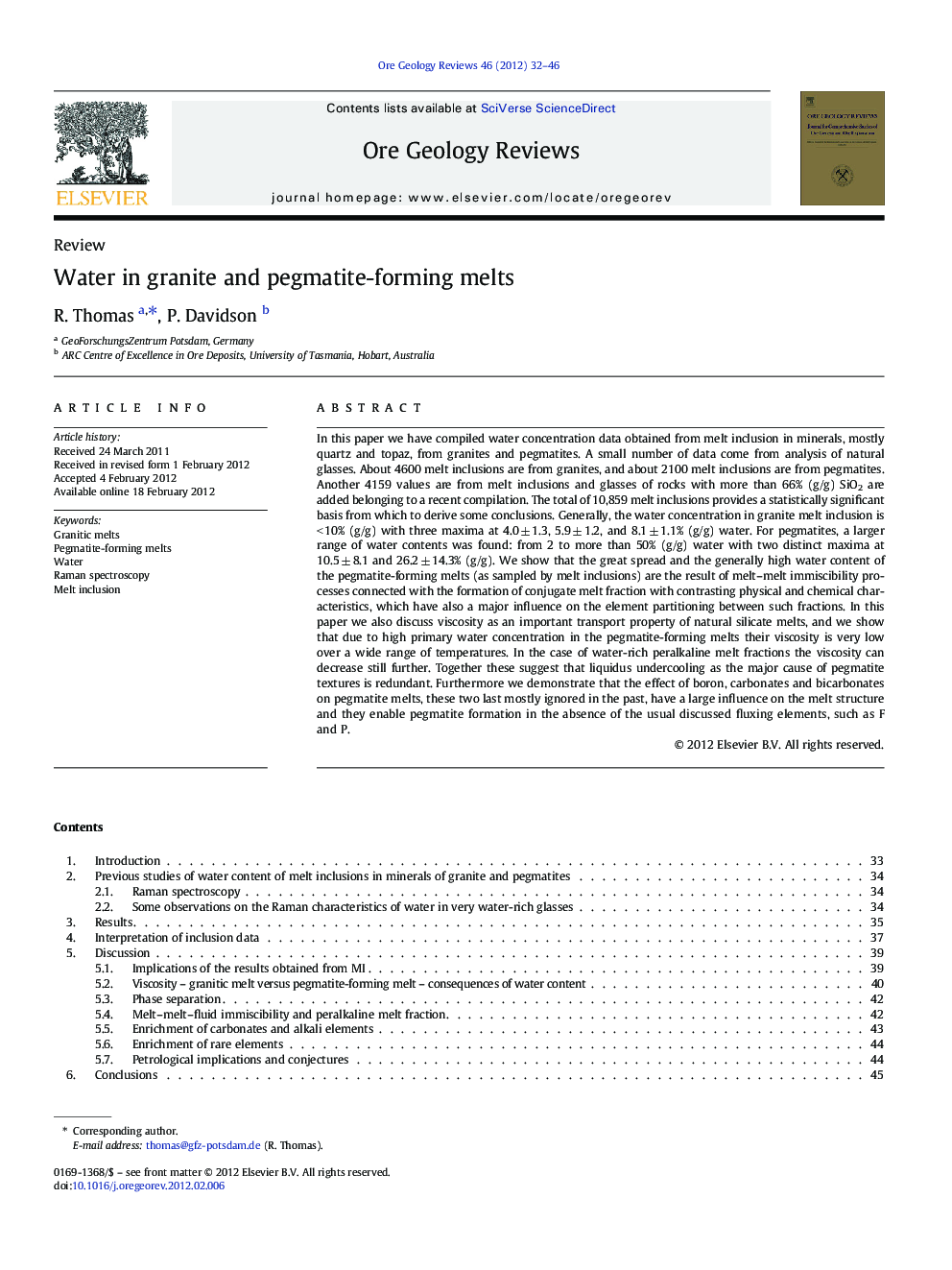| کد مقاله | کد نشریه | سال انتشار | مقاله انگلیسی | نسخه تمام متن |
|---|---|---|---|---|
| 4697617 | 1637257 | 2012 | 15 صفحه PDF | دانلود رایگان |

In this paper we have compiled water concentration data obtained from melt inclusion in minerals, mostly quartz and topaz, from granites and pegmatites. A small number of data come from analysis of natural glasses. About 4600 melt inclusions are from granites, and about 2100 melt inclusions are from pegmatites. Another 4159 values are from melt inclusions and glasses of rocks with more than 66% (g/g) SiO2 are added belonging to a recent compilation. The total of 10,859 melt inclusions provides a statistically significant basis from which to derive some conclusions. Generally, the water concentration in granite melt inclusion is < 10% (g/g) with three maxima at 4.0 ± 1.3, 5.9 ± 1.2, and 8.1 ± 1.1% (g/g) water. For pegmatites, a larger range of water contents was found: from 2 to more than 50% (g/g) water with two distinct maxima at 10.5 ± 8.1 and 26.2 ± 14.3% (g/g). We show that the great spread and the generally high water content of the pegmatite-forming melts (as sampled by melt inclusions) are the result of melt–melt immiscibility processes connected with the formation of conjugate melt fraction with contrasting physical and chemical characteristics, which have also a major influence on the element partitioning between such fractions. In this paper we also discuss viscosity as an important transport property of natural silicate melts, and we show that due to high primary water concentration in the pegmatite-forming melts their viscosity is very low over a wide range of temperatures. In the case of water-rich peralkaline melt fractions the viscosity can decrease still further. Together these suggest that liquidus undercooling as the major cause of pegmatite textures is redundant. Furthermore we demonstrate that the effect of boron, carbonates and bicarbonates on pegmatite melts, these two last mostly ignored in the past, have a large influence on the melt structure and they enable pegmatite formation in the absence of the usual discussed fluxing elements, such as F and P.
► Granite and pegmatite melts have significantly different water concentration.
► Granite melts have water concentrations lower than about 10%.
► Characteristic values for pegmatite-forming melts are much higher, averaging approximately 20%.
► The viscosity of the pegmatite and granite melts differ by a factor of approximately 104.
► Melt–melt–fluid immiscibility is critical in pegmatite formation.
Journal: Ore Geology Reviews - Volume 46, August 2012, Pages 32–46